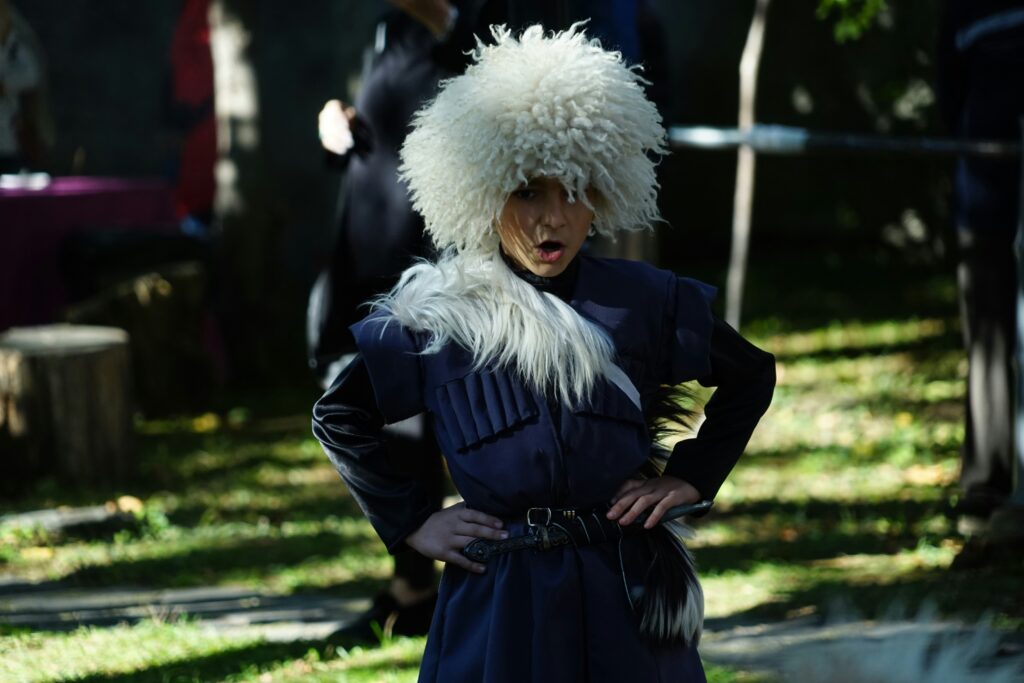Introduction:
Georgia, a country nestled at the crossroads of Europe and Asia, is renowned for its vibrant folk culture, which is deeply rooted in centuries-old traditions and customs. From traditional music and dance to culinary delights and festivals, Georgian folk culture is a celebration of the country’s rich heritage and diverse regional influences. In this blog post, we’ll explore the fascinating world of Georgian folk culture, offering a guide to some of its most cherished traditions and practices.
Polyphonic Singing: Harmonies of the Soul
At the heart of Georgian folk music is polyphonic singing, a unique vocal tradition that has been passed down through generations. Characterized by its haunting harmonies and complex melodies, Georgian polyphony is recognized by UNESCO as a masterpiece of intangible cultural heritage. Groups of singers, often men, come together to form a tight-knit circle and create mesmerizing vocal textures that evoke a sense of unity and connection with the natural world. From the highlands of Svaneti to the vineyard-covered valleys of Kakheti, polyphonic singing is an integral part of Georgian life, celebrated at weddings, festivals, and other social gatherings.
Traditional Dance: The Art of Storytelling
Georgian dance is a dynamic and expressive art form that reflects the country’s rich cultural tapestry. Each region of Georgia has its own distinctive dance styles, characterized by intricate footwork, graceful gestures, and colorful costumes. From the fiery leaps of the Khevsuruli dance to the graceful twirls of the Acharuli dance, Georgian folk dances tell stories of love, friendship, and the struggles of everyday life. Whether performed at local festivals or on the world stage, Georgian dance captivates audiences with its energy, passion, and timeless beauty.
Supra: A Feast for the Senses
No exploration of Georgian folk culture would be complete without mentioning the supra, a traditional Georgian feast that is as much a social ritual as it is a culinary experience. At the center of the supra is the tamada, or toastmaster, who leads the festivities with eloquent speeches, heartfelt toasts, and lively anecdotes. Guests gather around a table laden with an abundance of dishes, from savory khachapuri (cheese-filled bread) to succulent khinkali (dumplings) and fragrant roasted meats. As wine flows freely and toasts are raised in celebration, the supra becomes a joyous expression of hospitality, camaraderie, and shared cultural identity.
Craftsmanship and Artisanal Traditions: Preserving Heritage
Georgian folk culture is also preserved through traditional crafts and artisanal practices that have been handed down from generation to generation. From the intricate art of carpet weaving to the delicate craftsmanship of cloisonné enamelwork, Georgian artisans continue to produce exquisite works of art using age-old techniques and materials. Visitors to Georgia can explore artisan workshops and markets, where they can watch skilled craftsmen at work and purchase handmade souvenirs that serve as lasting mementos of the country’s rich cultural heritage.
Conclusion:
Georgian folk culture is a vibrant tapestry of music, dance, food, and customs that reflects the country’s rich history, diverse regional influences, and unwavering spirit of resilience. Whether it’s the haunting harmonies of polyphonic singing, the graceful movements of traditional dance, or the joyous camaraderie of a supra feast, Georgian folk culture offers a window into a world of timeless traditions and heartfelt celebrations. By immersing themselves in Georgian folk culture, visitors can experience the beauty, warmth, and hospitality of this captivating country firsthand, forging connections that transcend language and borders. So, come join the celebration and experience the magic of Georgian folk culture—it’s an experience you’ll never forget.

